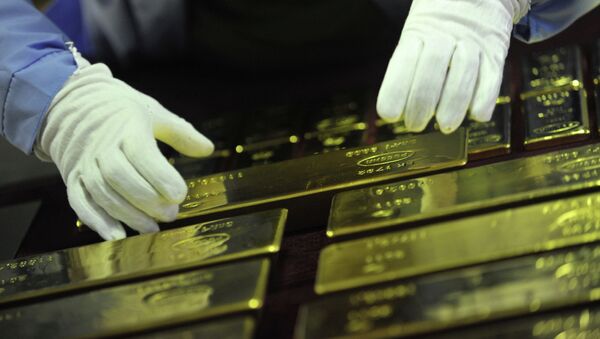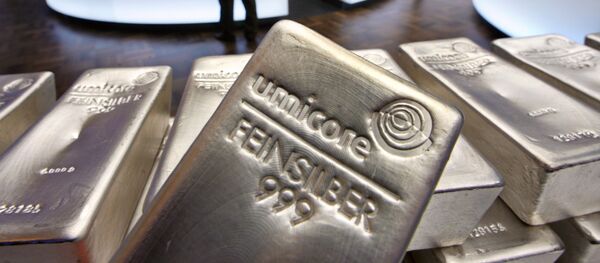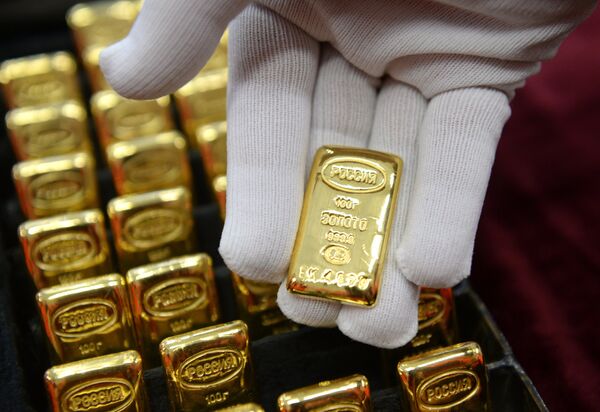On August 2 the price of gold future contracts for December delivery closed at $1,372.6 per troy ounce, their highest level since March 2014.
"China and Russia, the world's No. 1 and No. 3 producers, are catching up to the big industrial countries in stocks of bullion in their official reserves," remarked Marketwatch analyst David Marsh.
According to calculations from the World Gold Council, based on IMF statistics, with 1,823.3 metric tons of gold China has the world's sixth largest gold reserves. Russia is in seventh place, and has 1,498.7 tons of gold.
Last year, total world gold holdings increased by 702.5 tons, compared with 176.7 tons in 2014. World holdings increased by 32,733 tons in December, "their highest level since 2002 when central banks, particularly from developed countries, were engaged in a general sell-off. Much of the increase is due to last year's statistical upgrading of China gold coverage," Marsh wrote.
In December 2015 the renminbi was included in the IMF's Special Drawing Right basket of currencies, expanding that number of basket currencies to five.
In July 2014 Song Xin, who is also General Manager of the China National Gold Group Corporation, wrote that China should aim to accumulate 8,500 tons in official gold reserves, more than the US, in order to support its bid to make the renminbi a global currency.
On August 3, the World Gold Council reported that this year's surge in the price of gold is the precious metal's largest continuous gain since the European sovereign debt crisis in 2010 and 2011. Analysts have attributed the increase to investors' concerns about the effectiveness of central bank policies aimed at stimulating economic growth.
"Investors are starting to lose confidence in the effectiveness of unconventional monetary policies, following increasingly desperate bids by the world's central banks to reflate the global economy. In this environment, we believe investors are using gold to hedge portfolio risk as they add more stocks and low quality bonds to their asset mix," the World Gold Council wrote.
Pavel Khoroshilov, commodities specialist at Alor Broker, told Gazeta.ru that gains in gold are driven by fears about economic weakness, as well as increasing purchases by central banks of Russia and China.
"Large-scale demand from China and Russia has provided solid support for gold since the beginning of the year. From January to April, China bought 11 tons per month, and Russia bought 14 tons per month," Khoroshilov said.
"I predict that in the near future, over the next six months, the US Federal Reserve won't raise interest rates, and in connection with this, purchases of gold and other precious metals will increase."





